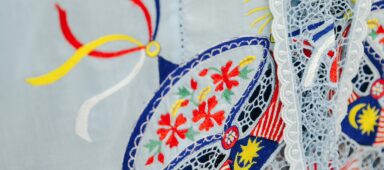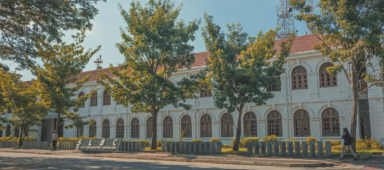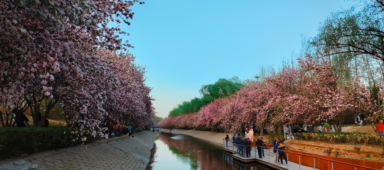Shining a light on this ancient Chinese art.

Before the age of electricity, candle-lit lanterns were the primary source of light, and many families knew how to make them. The need for lanterns dwindled significantly after electricity was introduced. Nowadays, they only make an appearance during festivals or within traditional households in Penang and Melaka.
Chuen Mun Wai, also known as Tjoan, had not planned to become a lantern maker, let alone one of the very few who still make them the traditional way. As a teenager, the Ipoh boy often went up to Penang and wandered down the old streets. Like in a page from a storybook, he got lost one day and chanced upon a lantern shop where Master Lee was at work.

“At that time, I only observed how the sifu (master) made the lanterns. Each time I went to Penang, I would go to his shop and ask him questions. But he didn’t show me how to do it. He would be busy working on different parts. It was like a puzzle.”
For the next 20 years, Tjoan visited Master Lee and learnt a little more about the craft each time. He also served as a middleman for those who wanted to purchase lanterns from Master Lee. It was only after the lantern artisan passed away that Tjoan finally put the pieces together and started making lanterns.

To make them from scratch, Tjoan shapes the frame of the lantern using bamboo and fastens them with threads. He wraps it with white cloth made from 100 percent cotton. Each lantern is given seven to eight coats of either acrylic or natural paint, the latter of which takes a longer time to make from natural ingredients but adds a sharper colour. The fabric is also coated with agar-agar (jelly) paste, which prevents the paint from seeping through.
Crafting lanterns using traditional methods is no easy task. Laborious and time-consuming, making a pair of lanterns can take months to complete.

The art of traditional lantern-making was brought to our country during the Tang Dynasty. While it is no longer practised by the general public, the ancient lantern styles are still cherished by the Peranakans of Malaysia, who are known for their deep appreciation of their heritage. It is no wonder that the majority of Tjoan’s orders come from the Peranakan Chinese community, followed by temples, as well as customers from Thailand, Taiwan and Singapore.
To the Peranakans, lanterns do more than just carry light. Symbolising good fortune and well wishes, they are heirlooms passed down from one generation to the next. Families may also order another pair of lanterns to mark important occasions like weddings or birthdays. Unlike festival lanterns, which only make an appearance during Mid-Autumn Festival, these traditional lanterns can be hung at the doorway any time during the year.

A well-kept lantern can typically last for 10 to 20 years, while those made by old artisans can last for 100 years and still be seen in temples. According to Tjoan, the traditional methods and natural ingredients allow the lanterns to last longer than lanterns made with synthetic materials. Unlike metal, plastic can become brittle if you leave it in the sun for too long.
The traditional glue he uses is also instrumental in holding this piece of heritage together. Handmade with tapioca flour in warm water, the glue absorbs moisture during rainy days and hardens during hot weather, allowing it to last longer than commercial glue.

Tjoan often makes Hock Chew lanterns, also known as “umbrella lanterns” for their distinctive shape or “surname lanterns” due to the Chinese characters painted on them. There are also Teochew lanterns, which have a basket-like shape.
His motivation for holding on to this handicraft is simple: heritage. Given his Peranakan roots, he feels the urge to preserve this heritage and the theory of lantern-making for future generations of artisans.
“When I am not around, if there are people who have an interest in making lanterns, at least they have a theory to refer to.”
Want to try your hand at lantern-making? Book a session with Tjoan on LokaLocal.




